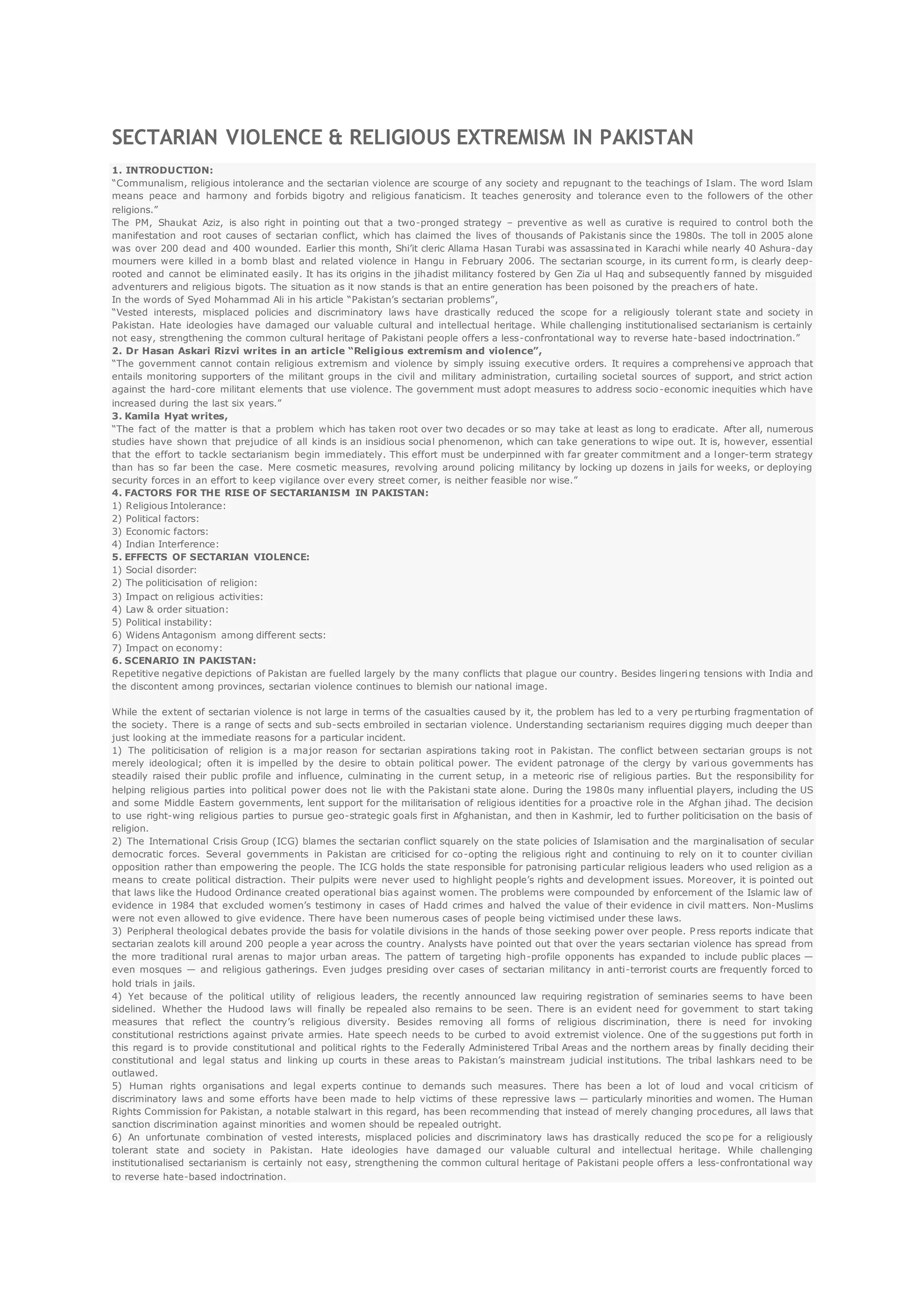Sectarian violence in Pakistan has claimed thousands of lives since the 1980s and remains a serious problem. It has deep roots originating from policies that fostered religious extremism and militancy. Efforts are needed to address the political, economic, and social factors that have promoted intolerance and enabled militant groups to indoctrinate youth. Long-term strategies are required to strengthen cultural heritage, promote dialogue between religious communities, and reverse hate-based teachings through education and an inclusive political system.

